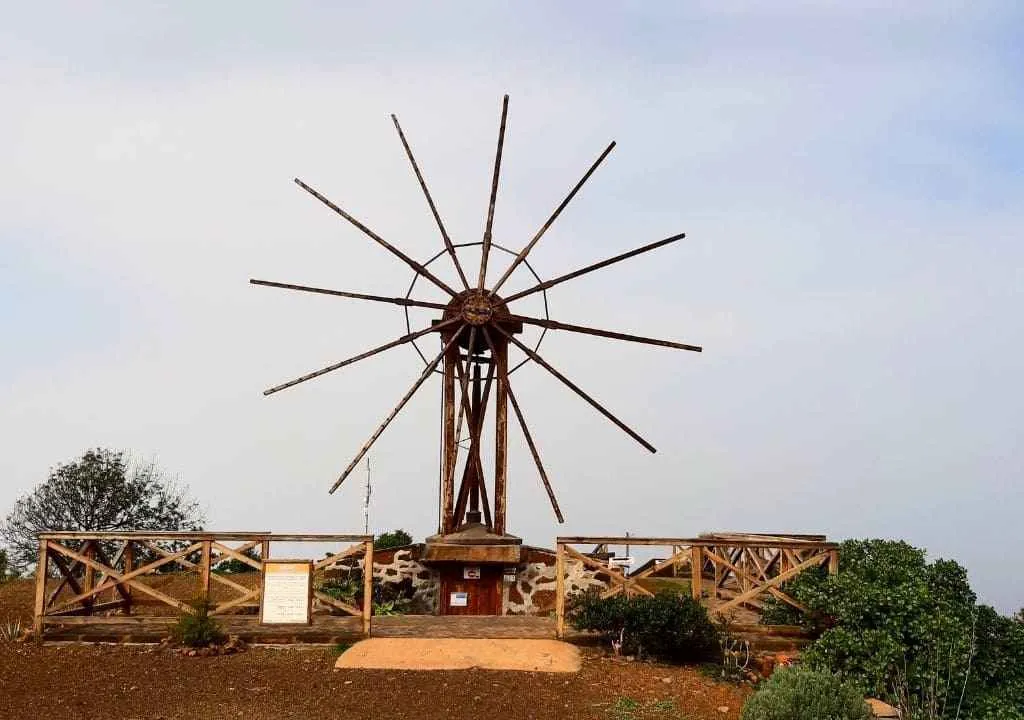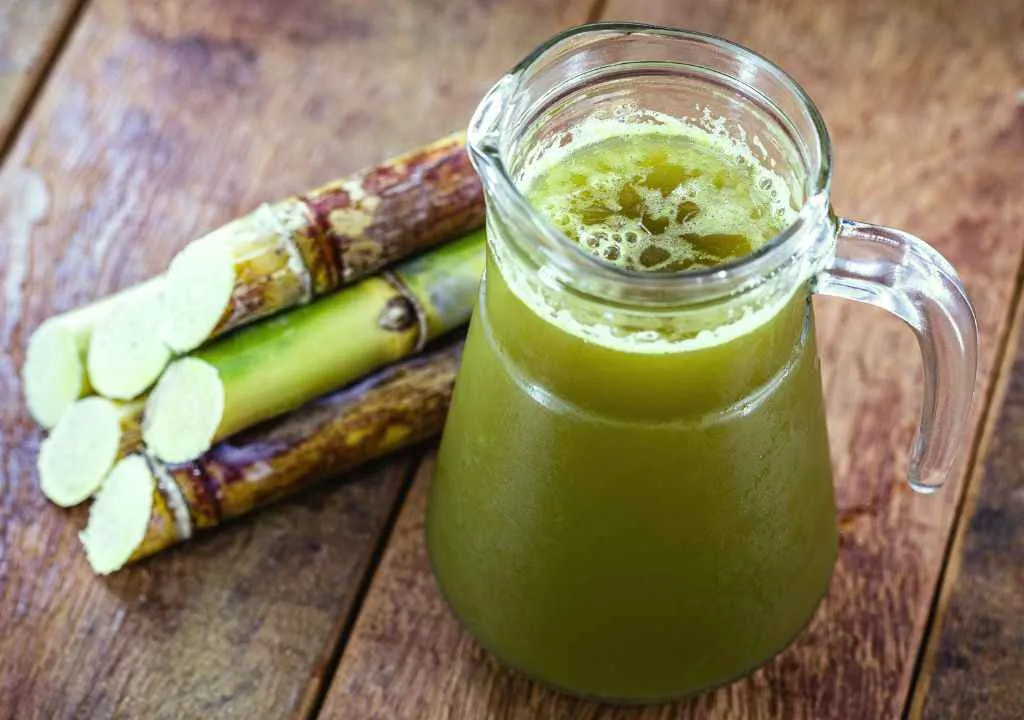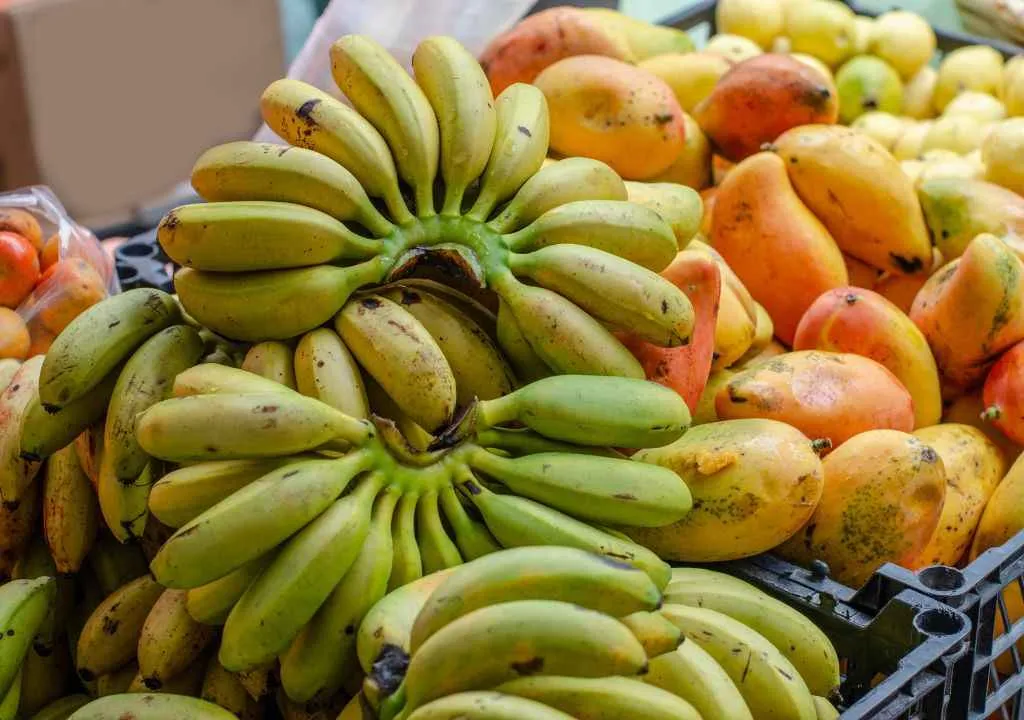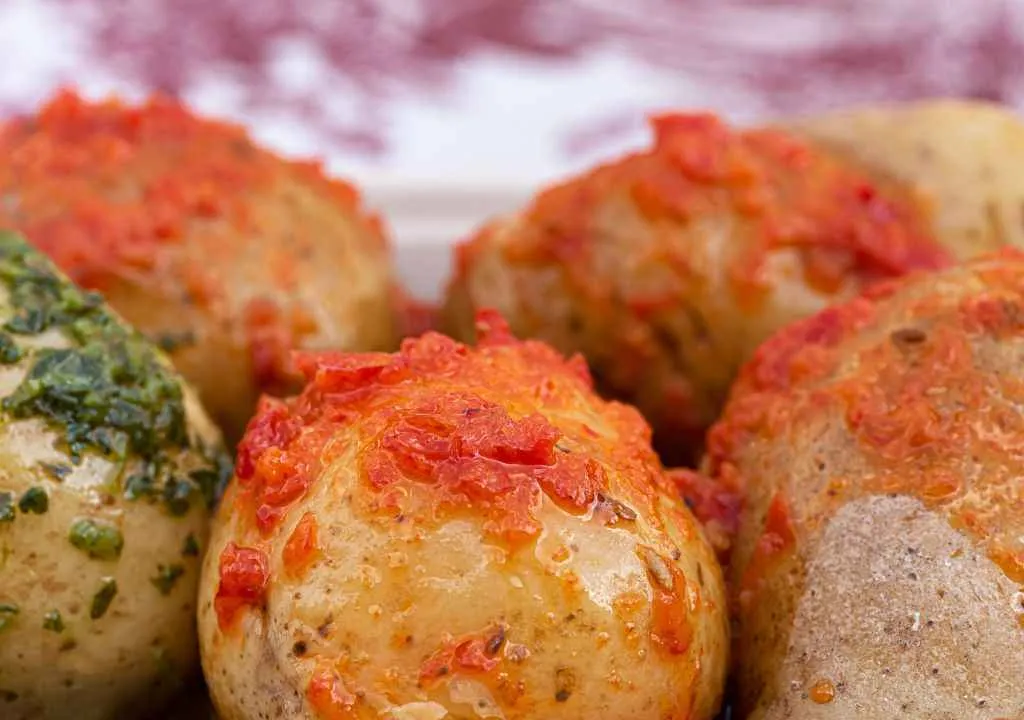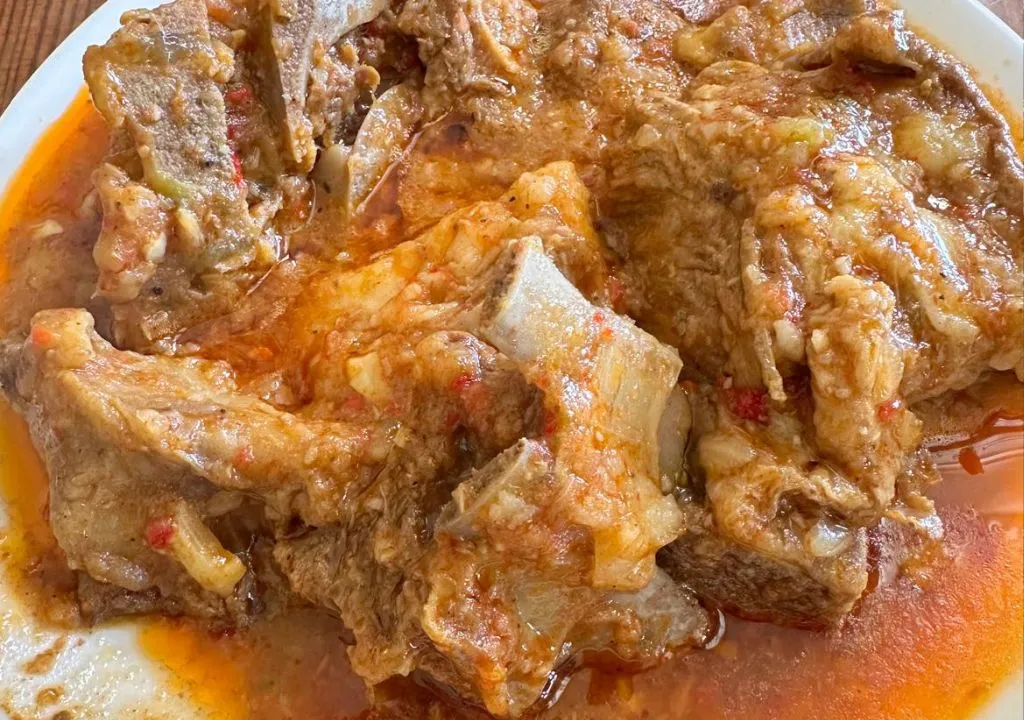Gofio is more than an ingredient, it’s part of the Canarian soul.
From pre-Hispanic times to modern kitchens, this toasted flour has united generations with its deep flavour and incredible versatility.
Here you’ll discover what gofio is, why it’s so special, and how to prepare it at home with traditional and modern recipes that are still part of everyday life in La Palma and across the archipelago.
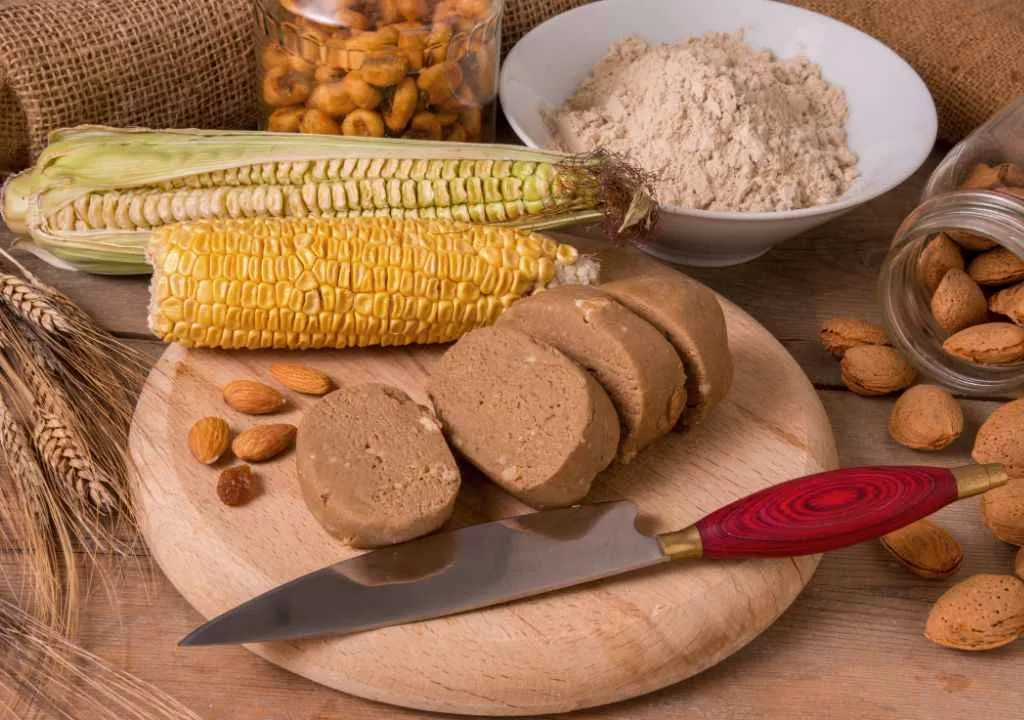
What Is Gofio?
- Gofio is a flour made from toasted and ground cereals, mainly corn (millo) and wheat.
It can also be made from barley, lentils, or rye, depending on the area and time of year.
It was already prepared by the Guanches, the ancient inhabitants of the Canary Islands, and has been a staple food ever since, in La Palma and beyond. - For centuries, gofio has been part of breakfasts, meals, and celebrations.
Nutritious, easy to store, and full of energy, it became essential during hard times such as the post-war years and emigration to the Americas.
Today, it still holds a special place in every Canarian kitchen. - In 2014, Gofio Canario received the European quality seal “Protected Geographical Indication”, recognising its cultural and gastronomic value.
Health Benefits of Canarian Gofio
- Rich in fibre, protein, and minerals
- Provides natural energy
- Low in fat and sugar
- Perfect for athletes and healthy diets
- High in potassium, iron, zinc, and copper
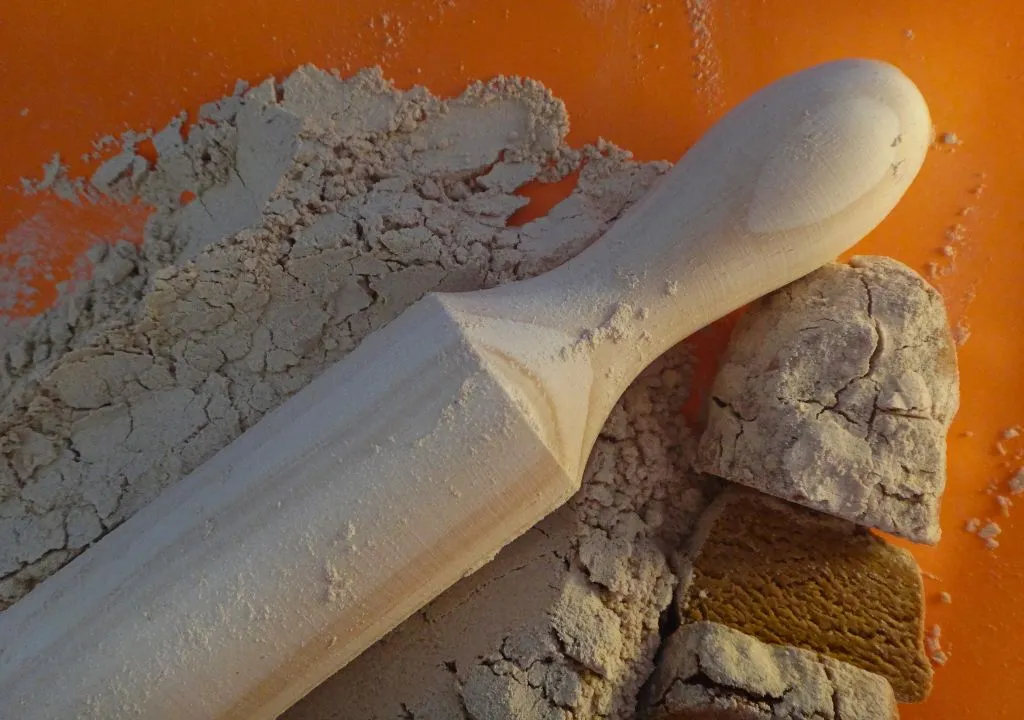
How Gofio Is Used
- Traditionally, gofio is mixed with water, milk, broth, or honey to make a paste or cream.
It’s also used in desserts, savoury dishes, or even as a substitute for bread. - One of its most typical forms is the “pella” or “gofio ball”, kneaded with broth, banana, or olive oil.
But you can also find it in shakes, mousses, escaldón, and even ice cream.
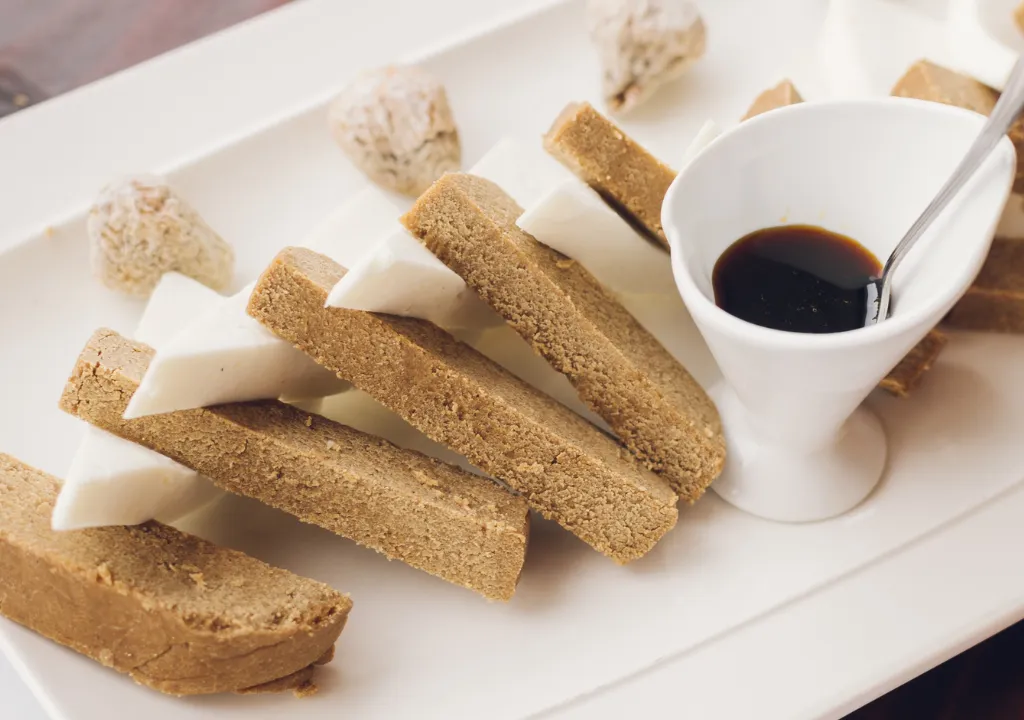
Beloved Gofio Recipes from La Palma
Escaldón de Gofio
A true Canarian classic.
Escaldón is prepared by mixing gofio with hot broth, meat, fish, or vegetable, until it becomes a thick, comforting cream.
You can add:
- Fish (fresh or preserved, like tuna or sardines)
- Meat (chicken, pork, rabbit, or lamb)
- Vegetables (onion, tomato, pepper, pumpkin)
- Legumes (chickpeas, beans)
- Spices (garlic, cumin, pepper, paprika, coriander)
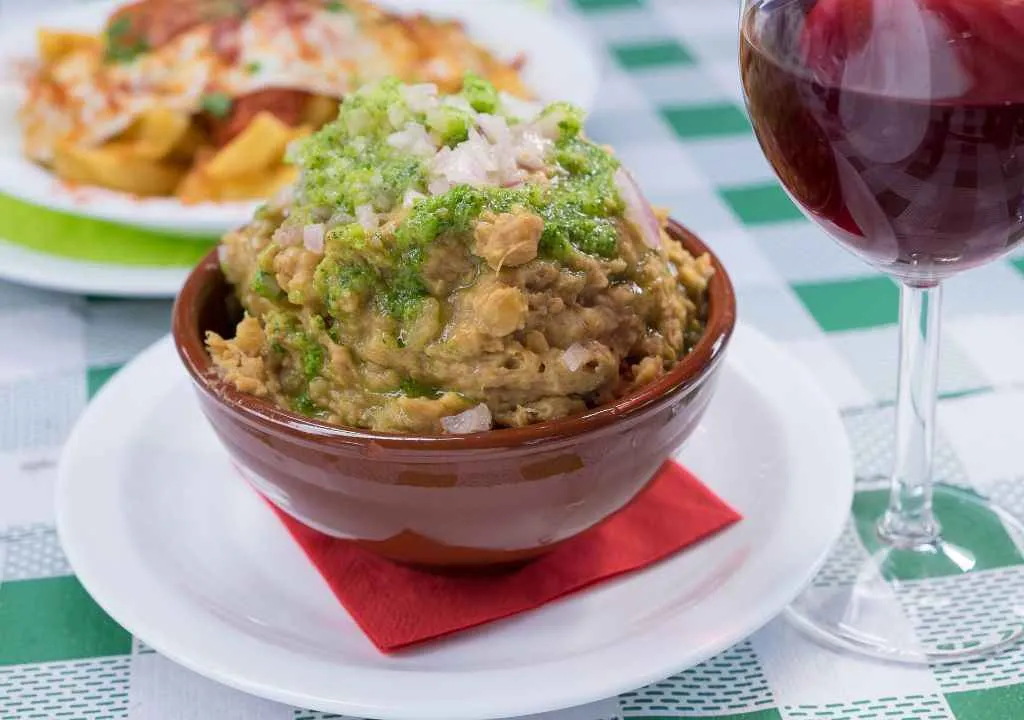
→ Serve it hot as a main dish or side, along with wrinkled potatoes, salad, or grilled meats.
Chicharrones with Gofio
Crispy and full of flavour.
This Canarian version of pork cracklings combines fried pork pieces dusted with a light layer of gofio.
It’s an intense, savoury bite, perfect as a tapa or to share during a family meal.
It tastes like celebration, countryside, and Sunday lunch.
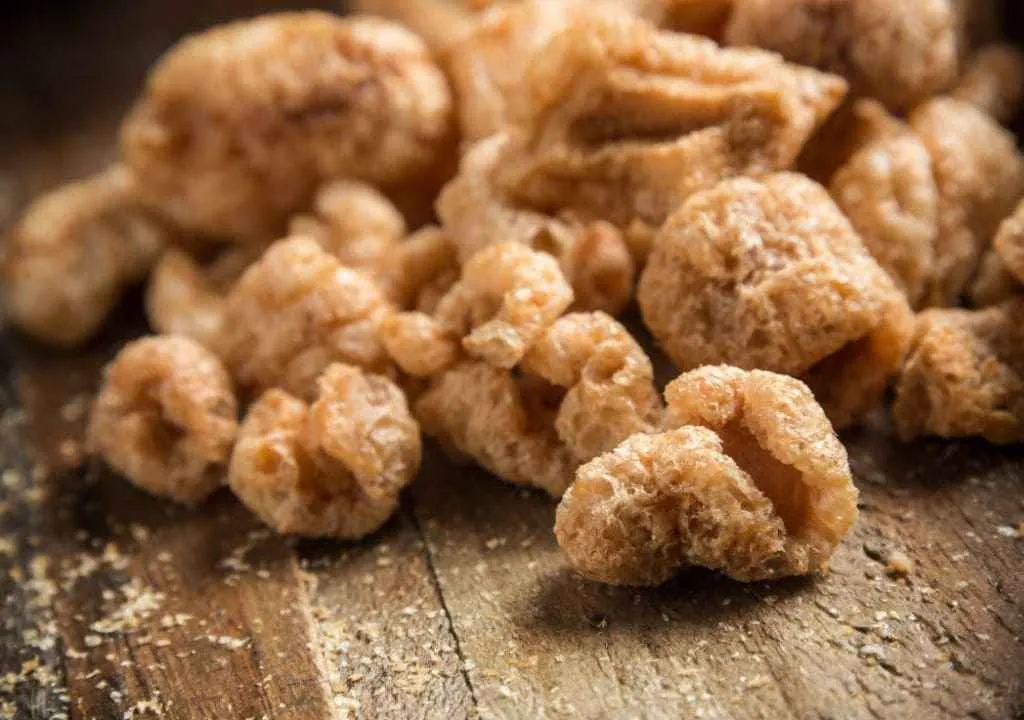
Escacho Palmero
A traditional and nutritious recipe, typical of Santa Cruz de La Palma and nearby villages.
It’s made with gofio balls kneaded with garlic, pepper, boiled potatoes, cumin, and vegetables.
Simple yet delicious, it pairs beautifully with fruits, vegetables, and even fish or cheese.
Ideal as a starter or light dinner.
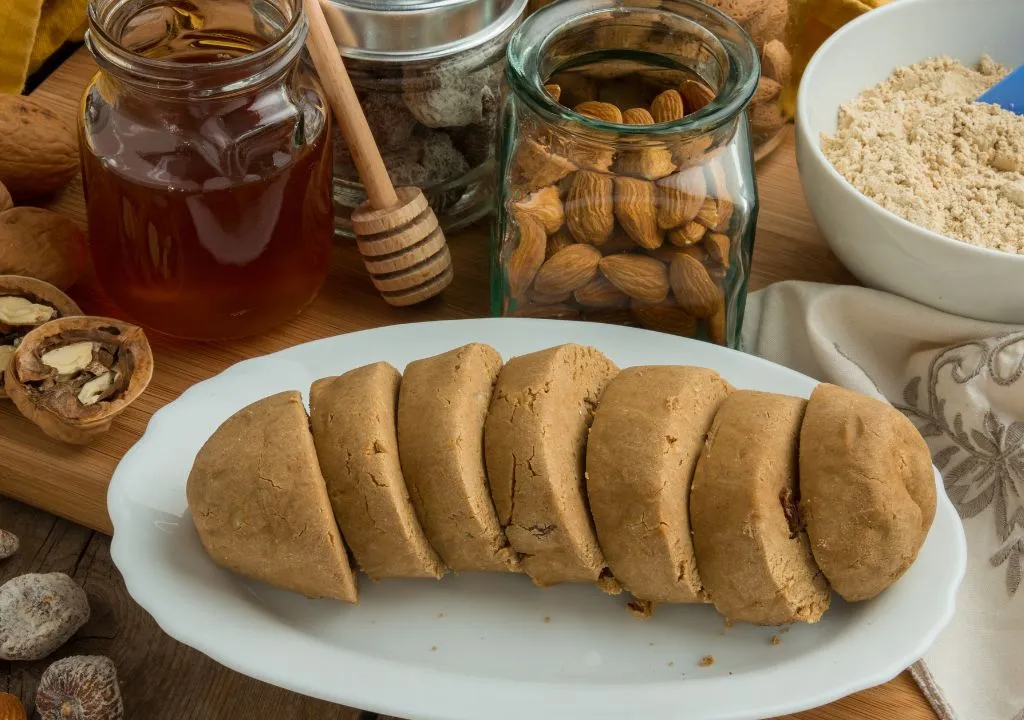
Rapaduras Palmeras
Rapaduras are one of La Palma’s most emblematic sweets.
They have a cone shape and are made with gofio, palm honey, sugar, ground almonds, lemon zest, and cinnamon.
There are also versions with chocolate, coconut, or milk.
They’re wrapped in cellophane and eaten in small portions, since they’re very sweet and full of energy.
In the past, they were the breakfast of farm workers, eaten with bread or milk.
Today, you’ll find them at fairs, local festivals, and craft markets.
Other Delicious Ways to Enjoy Gofio
- Gofio kneaded with banana and honey: a natural energy boost
- Gofio with milk: a quick, traditional breakfast
- Gofio mousse: smooth and creamy dessert
- Gofio ice cream: increasingly popular in artisan ice cream shops
- Fruit shakes with gofio: great for athletes and kids
Local Tip
If you visit La Palma, try gofio in a traditional tasca or family-run restaurant, they prepare it just like the grandmothers did.
And if you’re in the north, don’t miss the Gofio Museum in Las Tricias (Garafía).
There you can see how gofio was made in the past and enjoy a taste of living history.

